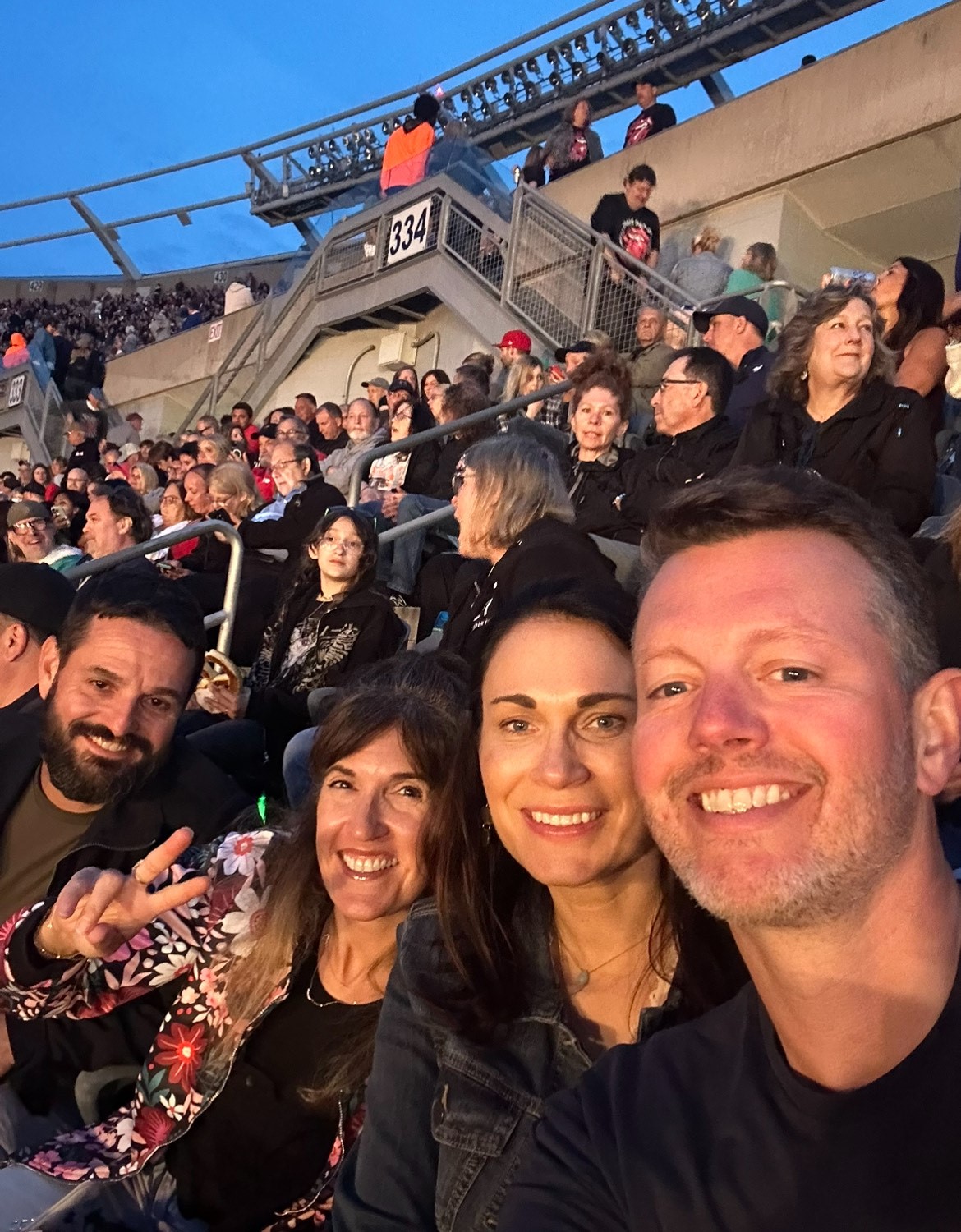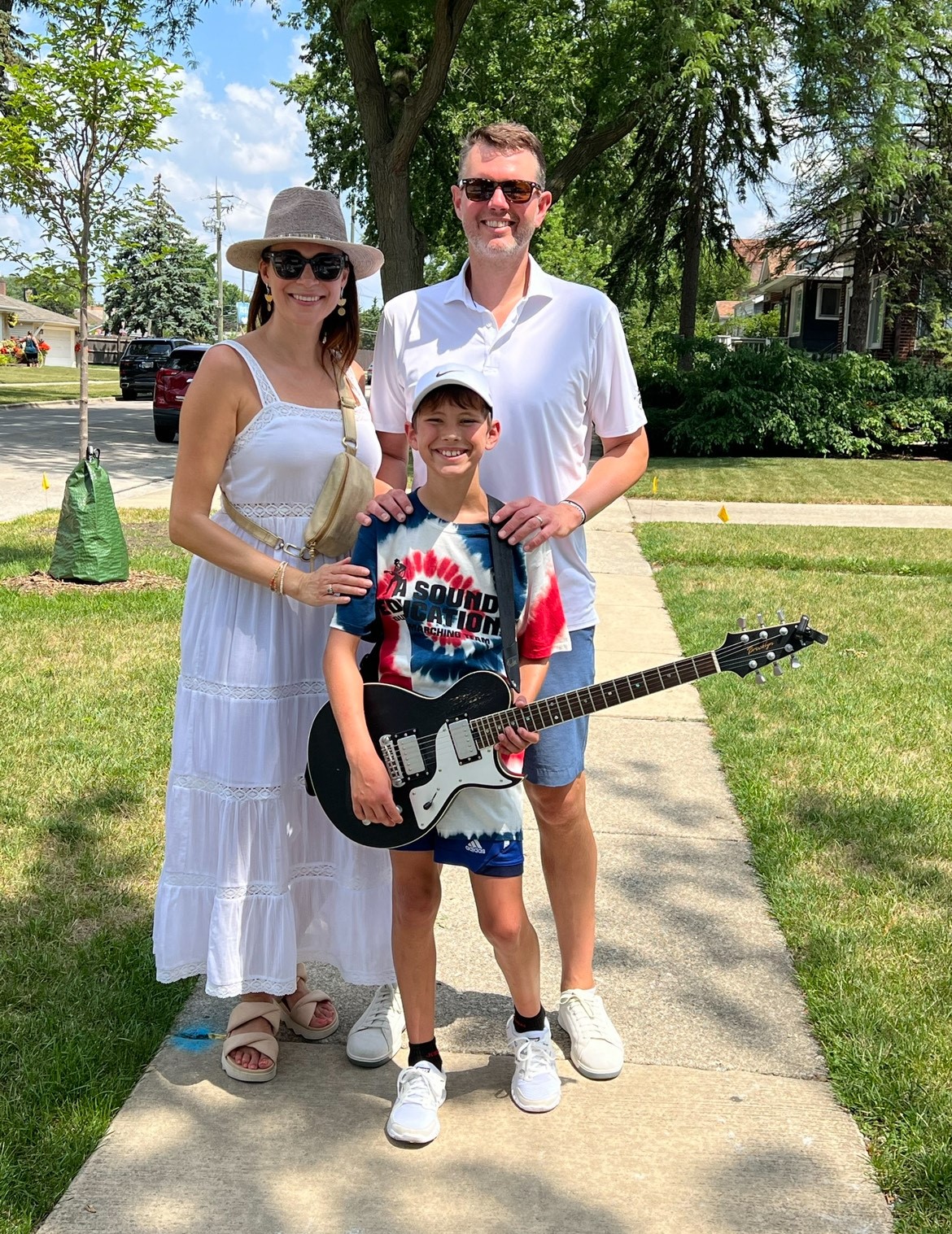Body
Megan H.’s first memory of living with pain dates back to high school as a freshman athlete experiencing shin splints. Though she had her legs elevated and iced, with tears running down her face, she was told to “lace up her running shoes” and “get back out there.”
Now, at age 45, Megan realizes that this moment set the foundation for how she processed pain — ice, ibuprofen and to put on a brave face as you push through it.
“I just thought it was normal to live with pain,” she said.
In fact, Megan lives with several chronic health issues resulting in long-standing, persistent pain — scoliosis; degenerative disc disease, including herniated discs and spinal stenosis; sciatica; and radiculitis. Other chronic dysautonomia conditions that cause interruption to the nervous system — e.g., migraines, fatigue and severe irritable bowel syndrome (IBS) — triggered intense pain for Megan throughout her entire adulthood.
Megan’s pain flare-ups — a sudden increase in severe pain — became more frequent and debilitating in her 20s and 30s interrupting everyday life as well as bigger life events. For example, Megan had a flare-up an hour before guests arrived for her daughter’s first birthday party. She spent the party frozen in one spot on the couch, unable to play with her daughter nor to interact with their friends and family. Several years later, when pregnant with her son, she spent the final trimester on partial bedrest due to the intensity of her lower back pain. At around that same time, she was promoted to her company’s leadership team as one of its youngest and few female members. However, she had to miss an important, three-day offsite meeting because she could barely get out of bed, let alone travel, due to the severity of her pain.
Megan Withdraws Due to Chronic Pain
Body
It was clear that chronic pain throughout her body was pulling Megan away from the things that she enjoyed most in life, including her family, friends and her career.
Even simple actions would cause significant pain for Megan — leaning over to put in contacts, getting a towel out of a linen closet, brushing her hair or sneezing.
Scared to make any movement, her only trauma-informed strategy was to “freeze” and to withdraw from engaging in everyday life so as to avoid triggering pain flare-ups that subsequently caused fatigue, brain fog, anxiety and depression.
Megan sought treatment from many specialists over the years, including orthopedists, rheumatologists, neurologists, mental health experts, gastroenterologists, physical therapists and chiropractors. Unfortunately, none of these options alone provided the relief she needed, nor did any provide integrated, holistic care for her chronic health issues alongside her chronic pain.
Then, finally, when Megan was in her early 40s, she discovered the Pain Management Center at Shirley Ryan AbilityLab.
Interdisciplinary Approach to Treating Pain at Shirley Ryan AbilityLab
Body
By the time many patients come to the Pain Management Center at Shirley Ryan AbilityLab, they have tried a myriad of treatment strategies for pain — such as injections, medications or surgeries — without feeling a positive impact on their lives.
However, the Pain Management Center is one of the only interdisciplinary pain clinics in the country offering a novel, team-based approach in which medical doctors, psychologists, physical therapists and occupational therapists collaborate to help patients with pain.
Through “active treatment,” patients participate proactively in a wide variety of therapy sessions, and they learn tools and strategies to better manage pain on their own.
By the time she started at the Pain Management Center, Megan was struggling to get out of bed most days and, even more devastating, to interact and engage with her husband and children. For Megan, the Pain Management Center was life-changing and, in many ways, “life-saving.”
“All of my chronic health conditions trigger and exacerbate one another, and I can’t navigate pain without contemplating my other chronic health issues,” said Megan. “At Shirley Ryan AbilityLab, the multi-disciplinary Pain Management Center team worked collaboratively and communicated with each other daily to be sure I had a holistic treatment plan.”
Movement Isn’t the Enemy. It’s the Key.
Body
Over four weeks in Shirley Ryan AbilityLab’s pain program, Megan learned techniques to reduce her pain — and to move again.
“I was in different sessions throughout each day, thus engaging in more movement during those four weeks than in the prior six months,” said Megan. “For so long, I viewed movement as the enemy, but through the program I learned that it’s the key.”
In physical therapy, Megan regained feeling she had lost in her left arm and fingers, as well as in her left leg and foot, thanks to stretching exercises and nerve glides — small, gentle movements that help mobilize nerves in the body. Specialized pelvic floor physical therapy helped Megan to address 20-plus years of lower-back stiffness and pelvic floor pain triggered by IBS flare-ups.
In occupational therapy, Megan worked on learning body and sleep mechanics, standing and sitting tolerance, and pacing strategies to help through the peaks and valleys of baseline pain and flare-ups. She also participated in activities like chair yoga, tai chi and water aerobics to regain confidence in safe and intentional movement.
Megan worked with a pain psychologist to practice relaxation and mindfulness techniques and to better understand the psychology of pain. Importantly, she also benefited from the community aspect of the pain program. Socializing and hearing from others who live with chronic pain helped her on own journey.
“Living with chronic pain is isolating — generating feelings of guilt, shame and diminished self-worth,” said Megan. “Being able to show up, and not having to apologize for my pain, lifted a huge weight that I had been carrying around every minute of every day.”

A Roadmap for Living with Chronic Pain
Body
Today, Megan says she has tools, strategies and techniques to navigate daily pain. When she feels a flare-up coming on, she no longer freezes nor catastrophizes. This reframed mindset, along with her curated flare-up plan, has been particularly impactful as she has experienced complications with other chronic health conditions in recent years.
She and her husband enjoy their two kids, now ages 11 and 14, as well as an active pup. She is able to prioritize and pace herself enabling her engagement in activities that just a few years ago would have been too painful, such as attending her daughter’s volleyball tournaments; walking with her son’s guitar band in the local Fourth of July parade; “chair” dancing the night away at the occasional concert; and spending quality time with her extended family at a recent reunion.

“This program isn’t a cure-all, but it is a reset and a roadmap for living with chronic pain,” said Megan.
At the end of her time at Shirley Ryan AbilityLab Pain Management Center, Megan sent a letter to her care team to offer her personal reflections: “I am no longer constantly on edge, waiting for the other shoe to drop. I have ownership of the quality of my life and the confidence to better navigate it. As I shared with my team on my last day, for the first time in my adult life, I finally feel safe in my body.”


